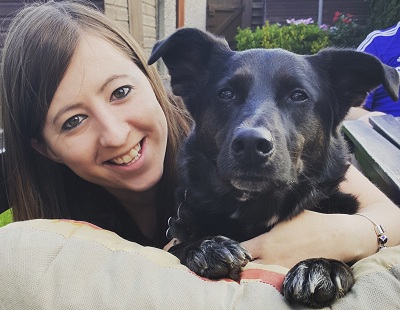UN student’s research highlights pets’ positive effect on children with Autism Spectrum Disorder
Date 12.11.2015

Research by a University of Northampton student has found evidence that pets can have a positive effect on the behaviour of young people with Autism Spectrum Disorder (ASD).
Katy Bolus, from Coventry, studied the effects of animals on 11 under-18s in the Midlands and Northern Ireland with ASD, which included those with Asperger’s syndrome.
The study saw Katy interview parents about their children’s relationship with their pets, including cats, dogs, guinea pigs, fish, rabbits, a turtle and a snake.
“Parents reported many positive changes in behaviour when their children interacted with their pets,” said Katy, who graduated with a 2:1 in Developmental & Educational Psychology in July.
“These included an increased calmness, increased social interaction and communication and decreases in negative behaviours, such as meltdowns.
“Pets also seemed to help reduce ASD traits, including facial tics, hand flapping, repetitive and obsessive behaviour and aggressive and violent behaviour.”
Parents interviewed by Katy also revealed animals can act as a learning aid for their children.
“Somebody with ASD may have a lack of empathy, where they cannot seem to recognise people’s emotions,” said Katy.
“But one parent mentioned that when their child was aggressive towards them, their dog would bark. This would make the child stop their aggressiveness, and recognise the impact of their behaviour on their parent’s feelings.”
Some parents also found that their children would learn to take care of their pets – for example, feeding a fish or taking a dog for a walk – which would, in turn, help them to understand the importance of caring for other people.
Negative behaviour with animals was also reported by some parents, with some children becoming livelier rather than calmer when with their pets, and others having sensory difficulties when around their pets.
Katy hopes her findings will help parents of ASD children who are considering getting a pet to make a more informed decision, based on their children’s characteristics.
While plenty of research on the effects of pets on young people with ASD already exists, the majority tends to measure behaviour over a short period of time, using mainly experimental methods.
Katy’s research differs in that, by interviewing parents, she was able to gain an overview of a child’s relationship with an animal from the very beginning of that relationship – a period of time which could span several years.
“Parents are with their children for most of their waking hours, and so their perceptions are crucial if you are attempting to understand the relationship between children and their pets,” said Katy.
“Instead of observing a situation for a short period of time, my methods allowed me to examine parents’ experiences over their children’s lifespan. This provides a better overall picture of the relationship between child and pet.”